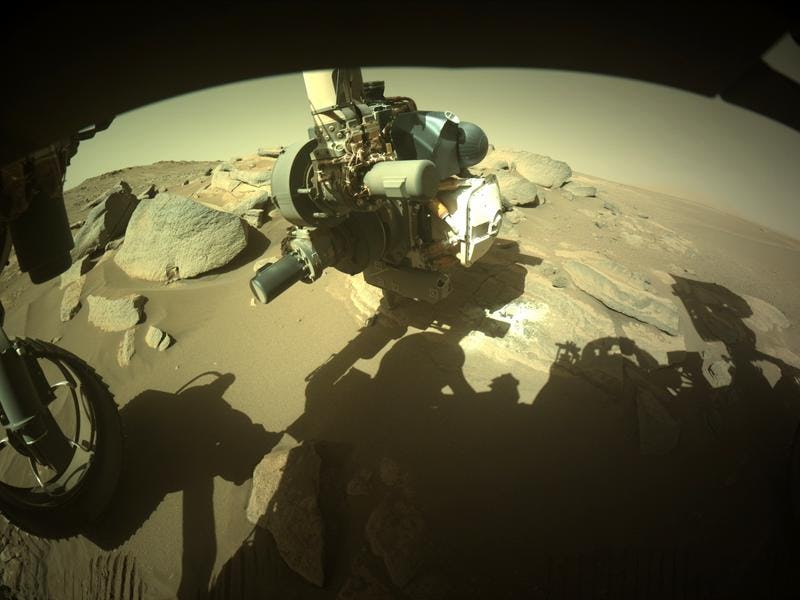Look: NASA’s Mars rover just uncovered “something no one has seen”
Perseverance uncovers the mysterious insides of a Martian rock.

NASA’s Perseverance rover has been on Mars for more than 200 days, and has gotten pretty familiar with the planet’s rocks. The robot has already zapped, drilled, and packed Martian rocks into its belly — and now it’s even revealed what’s beneath the surface of one of these rocks.
Recent images beamed down by Perseverance revealed the inside of a Martian rock after the rover removed a layer from its surface, revealing a never before seen view of Mars’ geology. The more the rover reveals about these rocks, the closer scientists get to understanding Mars’ history and whether or not the planet ever hosted life.
Perseverance landed on the Red Planet on February 18, and has been scouring Mars’ Jezero Crater ever since in search of clues for ancient life.
Following a brief hiatus due to the solar conjunction which made it difficult to communicate with the rover on Mars from October 2 to 19, Perseverance was back in full force. The robot began exploring the South Séítah region of Jezero Crater, which may contain some of the oldest rocks of the crater.
Perseverance sliced open a rock in Jezero Crater to take a look inside.
“Get a load of these layers! I’m getting out my abrading tool to take a look inside,” the Perseverance rover wrote on the mission’s Facebook page. “Layered rocks like this often form in water, and can hold clues about what their environment used to be like.”
Using the abrading tool on its robotic arm, Perseverance chipped away a layer of rock to reveal its insides.
An inside look at Martian rock as captured by the Perseverance rover using its Mastcam-Z camera.
“I’ve abraded a small patch of this rock to remove the surface layer and get a look underneath,” Perseverance wrote on the mission’s Facebook page.
The rover beamed back images of the exposed rock after it had removed its top layer. The rock’s insides appeared to have more concentrated minerals and sediments, which Perseverance will likely snag a piece of for its sample return mission.
In September, Perseverance made history after it collected its first rock sample from Mars. Perseverance is supposed to collect at least 20 samples from Mars using a drill attached to the robot’s arm. Once it has collected its samples, Perseverance will leave them behind on Mars for a pickup mission planned within the next 10 years or so.
The insides of Martian rocks hold vital clues to possible ancient life on the planet, and whether or not we are alone in the universe.
NASA will send a Sample Retrieval Lander mission to land on a platform near the site where Perseverance stowed the sample tubes. Once the platform touches down on Mars, a small rover designed by the European Space Agency (ESA) will roll out and grab the samples.
The rover will place the samples into a single large canister, which it will load onto the Mars Ascent Vehicle. This vehicle will then liftoff from Mars, carrying the canister into Mars’ orbit, where another spacecraft will be waiting to catch the canister. The orbiter will drop off the samples on Earth, where scientists can analyze them in a lab.
By doing so, scientists are hoping to get a better understanding of Mars’ potential past habitability.
Although Mars is a dry, desolate planet today, evidence suggests that the planet may have once had a warm, wet habitable environment that may have hosted some form of life. The rocks on Mars hold clues to possible life in the universe, and whether or not life exists beyond Earth.
This article was originally published on